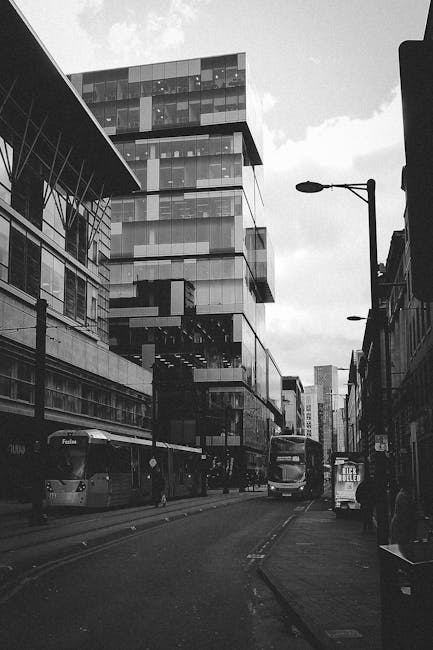Manchester’s Must-See Architecture
Manchester is a city rich in history and culture, boasting a diverse array of architectural styles that span centuries. Whether you’re a history buff, an architecture enthusiast, or simply a curious traveler, Manchester’s buildings tell the story of its industrial past and vibrant present. In this blog post, we’ll take you on a tour of Manchester’s must-see architecture, from historic landmarks to modern marvels.
The Historic Heart of Manchester
Manchester is home to some of the most iconic and historically significant buildings in the UK. Let’s explore a few that should definitely be on your list.
Manchester Cathedral
Located in the heart of the city, Manchester Cathedral is a stunning example of Gothic architecture. Originally founded in 1421, the Cathedral has been a focal point of the city for centuries. Its intricate stained glass windows and stunning interior make it a must-visit.
John Rylands Library
The John Rylands Library, opened in 1900, is one of the finest examples of neo-Gothic architecture in the world. Located on Deansgate, this library is not just a haven for book lovers but also a masterpiece of architectural design. Its grand reading room and detailed stone carvings are breathtakingly beautiful.
Manchester Town Hall
Manchester Town Hall, a classic example of Victorian Gothic architecture, was completed in 1877. Designed by Alfred Waterhouse, the building features a towering clock tower and elaborate interiors. It’s a symbol of Manchester’s industrial power and civic pride.
Industrial Revolution Landmarks
Manchester played a pivotal role in the Industrial Revolution, and its architecture reflects this era of rapid growth and innovation.
Castlefield
Castlefield is an urban heritage park that showcases Manchester’s industrial past. It’s home to the world’s oldest surviving passenger railway station, the Liverpool Road Station, which dates back to 1830. The area also features canals, warehouses, and viaducts that tell the story of Manchester’s transformation during the Industrial Revolution.
Victoria Baths
Opened in 1906, Victoria Baths is a stunning example of Edwardian architecture. This Grade II* listed building was once a public bathhouse and swimming pool, but today it serves as a venue for various events and tours. Its ornate tile work and stained glass windows are a testament to the grandeur of the era.
Modern Marvels
Manchester is not just about historical architecture; it also boasts some impressive modern structures that reflect the city’s forward-thinking spirit.
Beetham Tower
Standing at 554 feet, Beetham Tower is the tallest building in Manchester. Completed in 2006, this skyscraper is a striking addition to the city’s skyline. It houses the Hilton Hotel, luxury apartments, and a sky bar with panoramic views of the city.
The Lowry
Located in Salford Quays, The Lowry is a spectacular example of contemporary architecture. Opened in 2000, this arts center is named after the famous artist L.S. Lowry. Its unique design features a mix of sharp angles and sweeping curves, making it a modern architectural gem.
National Football Museum
Football fans will appreciate the National Football Museum, housed in the iconic Urbis building. This modern structure, with its glass façade and sleek design, opened in 2002 and has become a landmark in Manchester’s cityscape.
Actionable Tips for Exploring Manchester’s Architecture
To make the most of your architectural tour of Manchester, consider these tips:
- Plan Your Route: Use a map to plan your route and ensure you cover all the major landmarks. Many of the must-see buildings are within walking distance of each other.
- Take Guided Tours: Many of Manchester’s historic buildings offer guided tours. These tours provide valuable insights into the history and architecture of the buildings.
- Visit During Off-Peak Hours: To avoid crowds and have a more enjoyable experience, visit popular landmarks during off-peak hours.
- Photography: Don’t forget your camera! Manchester’s architecture provides plenty of photo opportunities. Be sure to capture both the exteriors and interiors of these stunning buildings.
- Check Opening Hours: Some buildings have specific opening hours or may require advance booking, so check their websites before you go.
Conclusion
Manchester’s architecture is a testament to the city’s rich history and dynamic future. From the medieval splendor of Manchester Cathedral to the modern elegance of Beetham Tower, the city’s buildings offer a fascinating journey through time. Whether you’re a local or a visitor, exploring Manchester’s architectural gems is an enriching experience that should not be missed.
So, lace up your walking shoes, grab your camera, and embark on an architectural adventure through the heart of Manchester. You won’t be disappointed!





